South Korea. Part III. RoadsMapApril 27 — May 3, 2007 Koreans read incredible amounts of newspapers. They subscribe to them for decades; they buy them on the way to work; they peruse the classifieds section in the free papers. Once they’ve finished reading, they plonk them down on shelves in the metro. There are shelves in every carriage without fail. 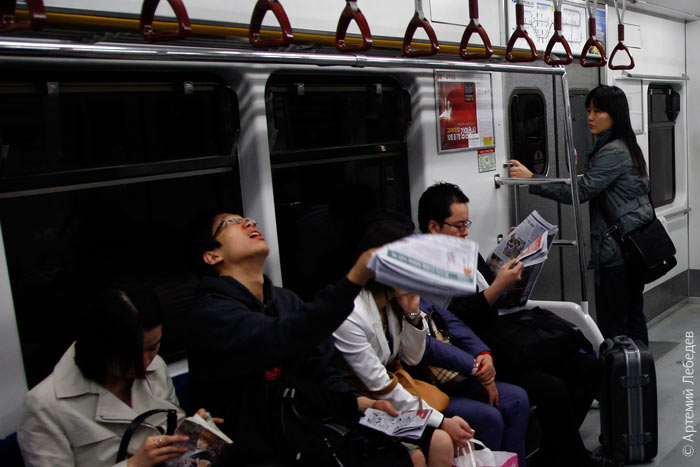 So many newspapers accumulate on these shelves that there are people whose job it is to do the rounds of the metro trains and collect the papers to be recycled. 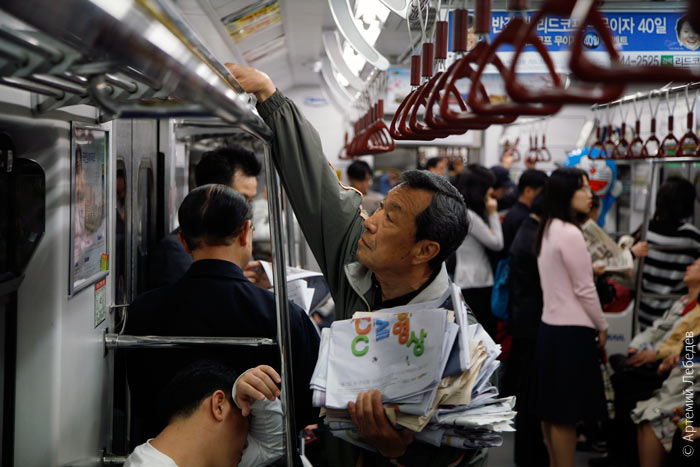 Here’s how much was harvested from just one train: 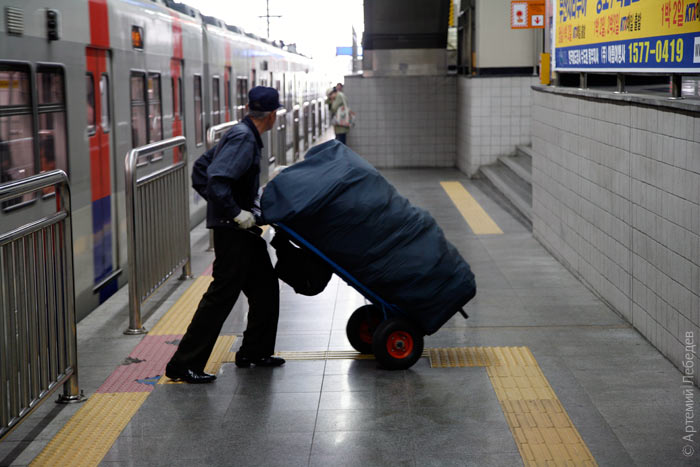 In Seoul there are three traffic lights hanging over every intersection — you can never have too many. In other cities there are just two (but the roads are also not as wide). 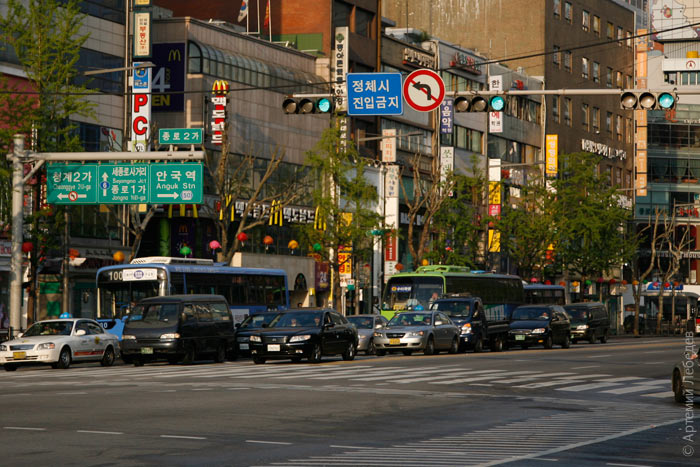 In Gyeongju they’ve installed the biggest road signs out (the pedestrian in Blagoveshchensk can’t compete). 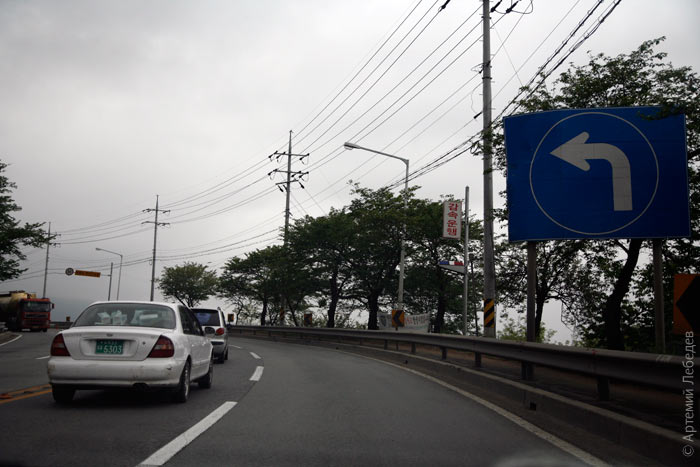 The buses have a special place here, just like in Chile. This place is demarcated by a blue stripe on the road. Buses are mostly blue; sometimes green. 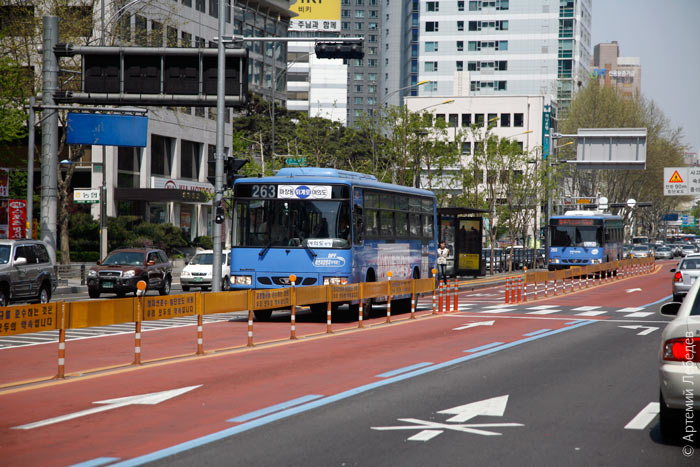 The taxi roof lights are also blue and green. 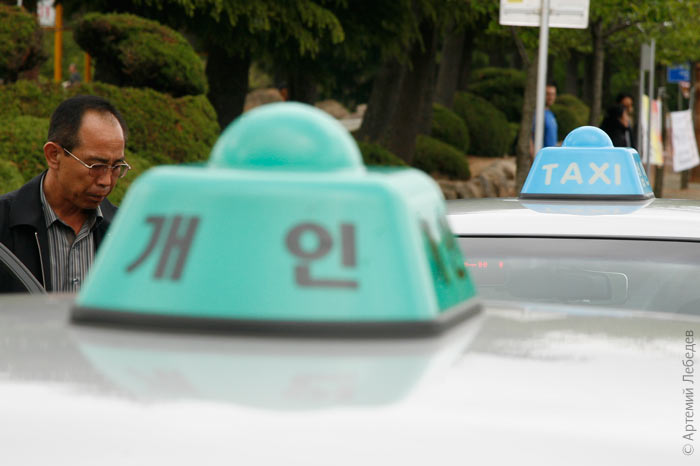 We encounter traffic controllers whose main job is to evict haughty drivers from the bus lanes. 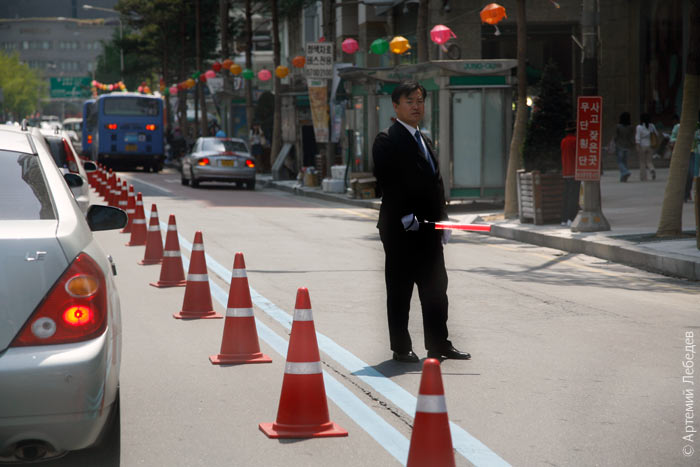 Driving here is nice and easy — the text is repeated in English on all of the main signs. 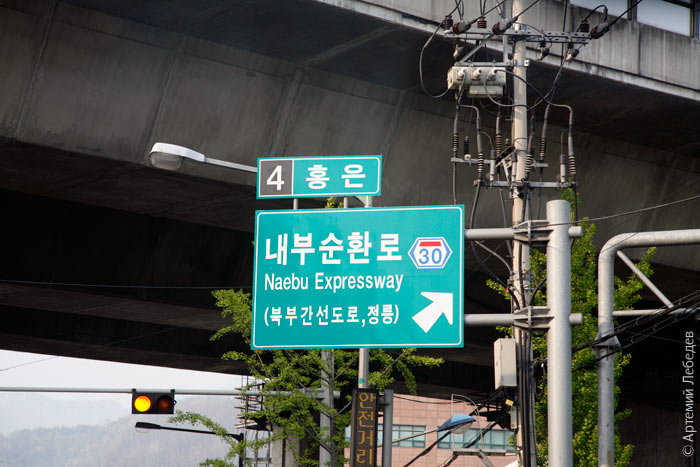 The signs are like in Europe, although there are some additions of local flavour. For instance, here’s a sign giving drivers a perfectly reasonable piece of advice: honk before you turn: 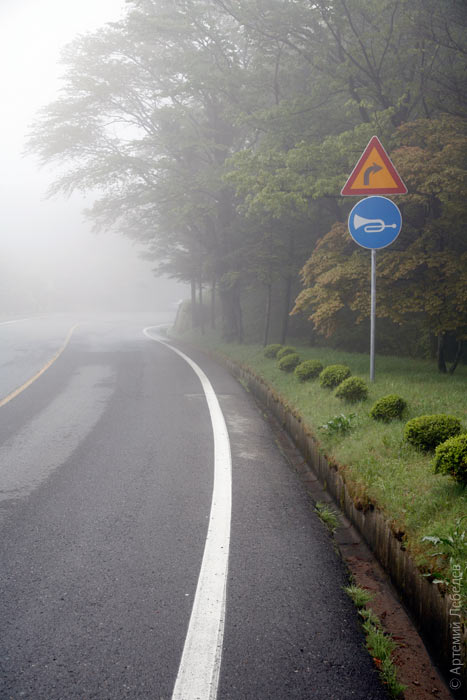 It’s totally unclear why an arrow is needed to show the direction of the incline — first, the sign makes it patently obvious which way the road is sloping without any need for an arrow; second, drivers can feel which way their cars are tilting. 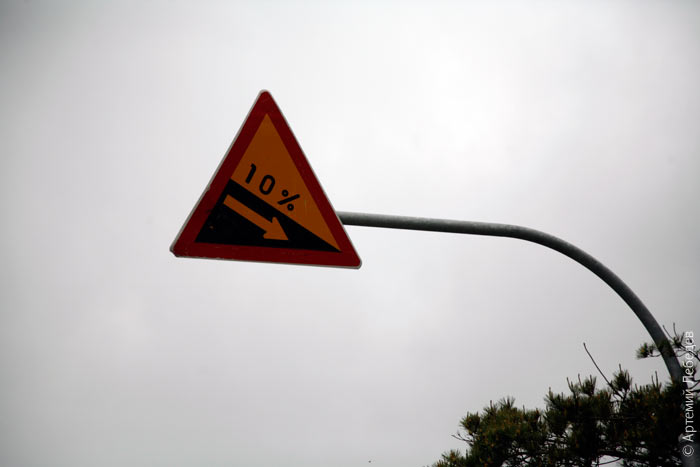 There are kilometre posts every two hundred metres. Here we’re looking at 93.6km. 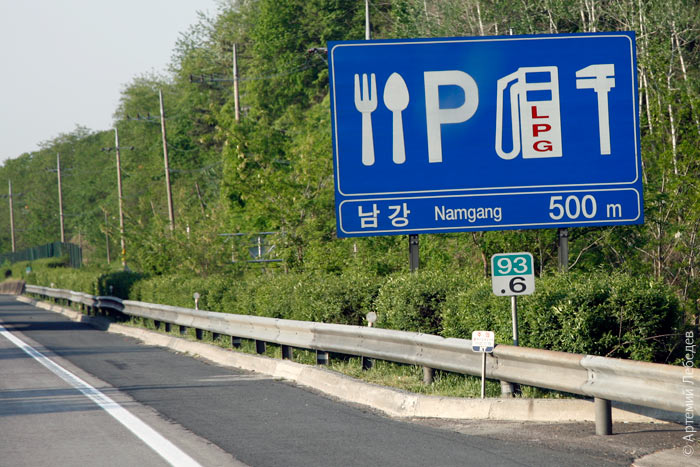 We spot car brands you don’t get back home. 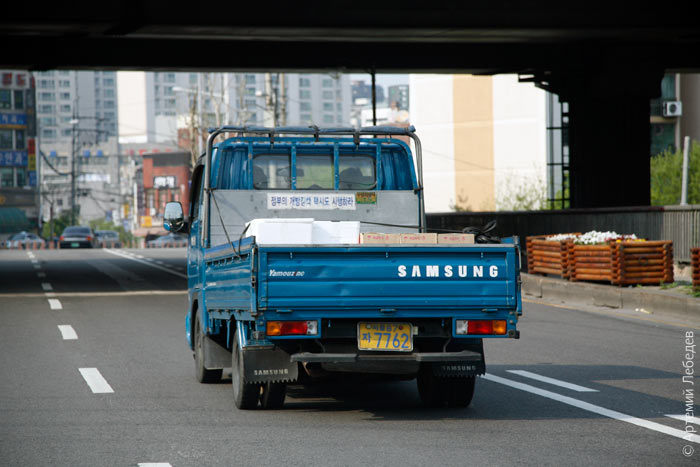 By the way, all SUVs and minibuses have a mirror screwed onto them allowing the driver to see the back bumper. 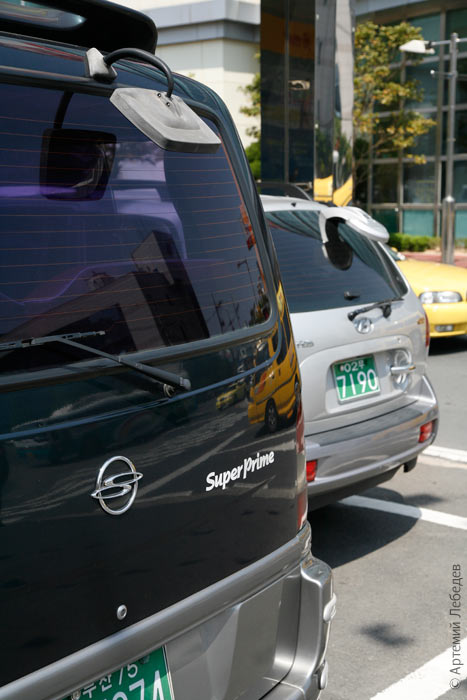 Many drivers have a device under the windscreen, which looks a bit like a radar detector. This is a very basic satellite receiver with a built-in map of the roads, but no display. Since Korea is a small country, a map of all the roads doesn’t take up much space. The device has only one parameter — the speed limit on a given stretch of road. In shops you can buy one that speaks in the voice of your favourite actress, saying things like: “Darling, for god’s sake, would you slow down, we’re in a 60km zone!” Koreans clearly take good care of their vehicles. You often see cars with blue polystyrene cubes stuck onto the doors — to ensure that they don’t scratch the adjacent car when opening the car door in a parking lot. 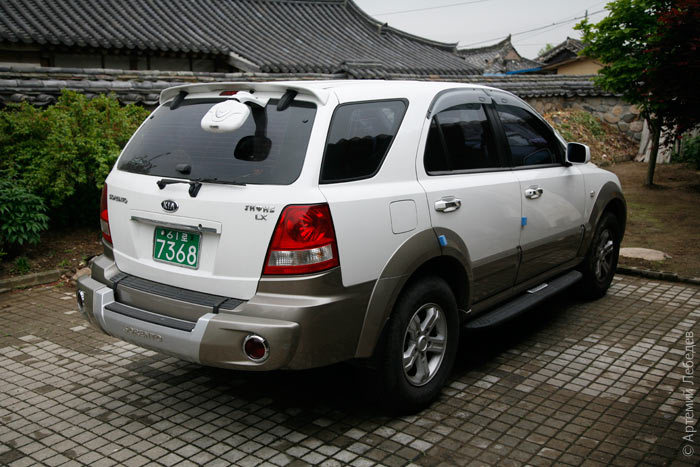 You sometimes see flashing lights unattached to a police car. Drivers become more careful when they see their glare, plus there’s the added benefit of not having to keep a whole extra car running with driver in tow.  Bike parking racks have an awning over them so that the bikes don’t get rained on. 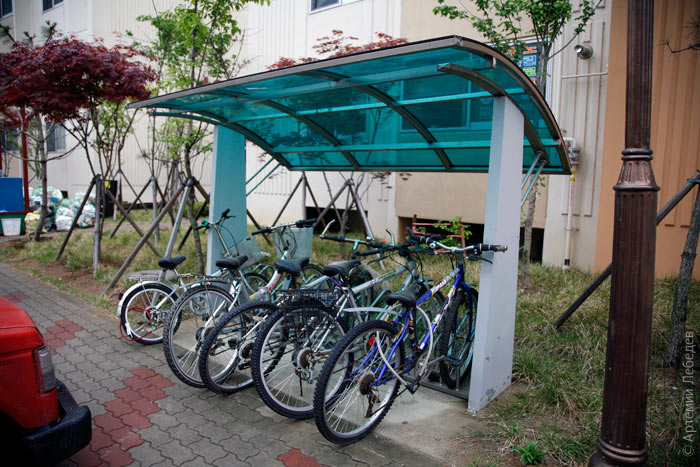 Barbed wire appears along the coast ten kilometres before the North Korean border. 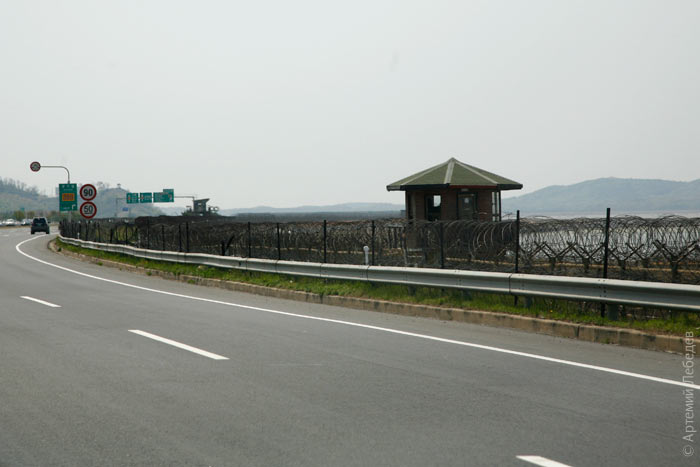 As you get closer to the border wheeled barriers, spiked metal barrels, boom barriers, and all sorts of other obstacles appear all over the roads. Having said that, it’s worth noting the united Korea in the circular sign on that pole. The issue of unification is just as trendy here as it is in the north, although no one actually intends to unite. 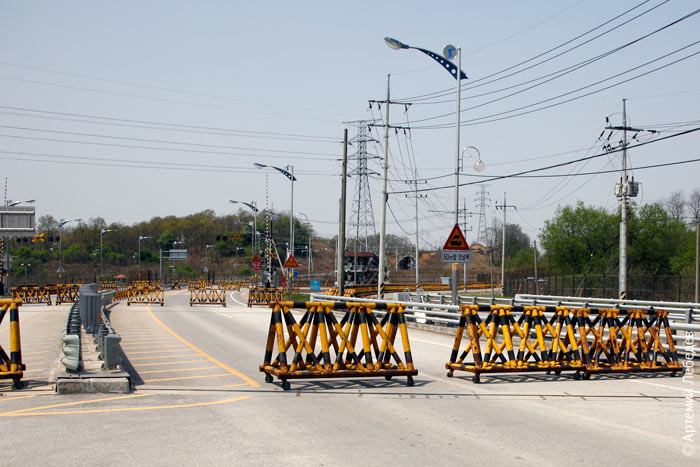 |